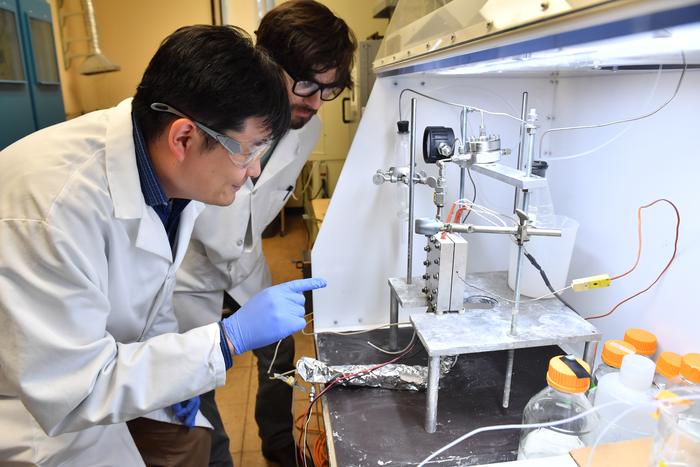When whiteflies take off, they don't just spread their wings and fly. Just .03 of an inch long, these tiny insects possess a variety of sophisticated techniques that provide them with exceptional stability in the air. Tel Aviv University researchers now say that they may hold the secret to stabilizing the take-off of small robotic manmade flyers such as miniaturized drones.
TAU research presented at a recent Israel Academy of Sciences and Humanities conference explores how whiteflies, which belong to the order of insects called Hemiptera, successfully take off without flapping their wings, which are 28% longer than their bodies. They raise only their wingtips to provide air resistance and stabilize. The presentation was based on new research following an earlier study published by the Journal of Experimental Biology.
"Whiteflies take a powerful 'jump' before they start using their wings in flight," said Dr. Gal Ribak of TAU's Department of Zoology, who led the research. "Then, when the insects are moving through the air, they have to stop the rotation of their bodies to reorient themselves for flapping flight. They are able to do that by extending the tips of their folded wings, causing high air resistance behind the body. This aerodynamic force stabilizes the take-off and only then do the insects spread their wings and start flying.
"What is noteworthy here is the response time," Dr. Ribak said. "All this takes less than 12 milliseconds, and it doesn't require feedback from the nervous system. Nature is providing us with guidance on how to stabilize the take-off of small robotic manmade flyers."
Small but powerful
According to the study, conducted with TAU undergraduate student Eyal Dafni and in collaboration with the late Prof. Dan Gerling, TAU Emeritus Professor of Entomology, size is a key component of the insects' successful ascent. Their tiny size allows them to execute swift stabilizing responses using the air resistance of different body parts.
"The whiteflies leave the ground rotating forward," said Dr. Ribak. "That rotation should result in the insects somersaulting upon leaving the ground. But the tips of the folded wings provide adequate air resistance, similar to the horizontal surfaces on an airplane tail."
As part of the study, the team filmed the ascent of the insects with high-speed cameras, which allowed them to observe the take-offs in slow motion and extract 3D data on the motion of the insects. (See video at https://www.aftau.org/videos—whiteflies) They then used the data to model the aerodynamics and rotation of the insects during take-off. The model revealed the tips of the folded wings to be the most important element of the stability mechanism.
"To test this prediction, we clipped the wingtips of some whiteflies and observed their take-off again," said Dr. Ribak. "As we predicted, the whiteflies with clipped wings were incapable of stabilizing before spreading and flapping their wings."
The researchers are currently studying other small insects with shorter wings that also leap during take-off but use alternative mechanisms for stabilizing the jump.
###
Tel Aviv University (TAU) is inherently linked to the cultural, scientific and entrepreneurial mecca it represents. It is one of the world's most dynamic research centers and Israel's most distinguished learning environment. Its unique-in-Israel multidisciplinary environment is highly coveted by young researchers and scholars returning to Israel from post-docs and junior faculty positions in the US.
American Friends of Tel Aviv University (AFTAU) enthusiastically and industriously pursues the advancement of TAU in the US, raising money, awareness and influence through international alliances that are vital to the future of this already impressive institution.
Media Contact
George Hunka
[email protected]
212-742-9070
@AFTAUnews
############
Story Source: Materials provided by Scienmag





